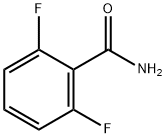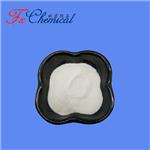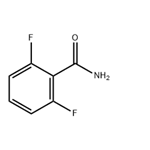2,6-Difluorobenzamide is a major metabolite of pesticide diflubenzuron and has been quantitated by HPLC/diode-array method.
2,6-Difluorobenzamide is a white powdery crystal, insoluble in water. It can be obtained by hydrolysis of 2,6-difluorobenzonitrile. 2,6-Difluorobenzamide is an important intermediate in the synthesis process of benzoylurea insecticides, which is used to synthesize the next intermediate 2,6-difluorobenzoyl isocyanate, and finally obtain flubolurea, pyruron, fluridin, lice mite urea and other pesticide varieties. It can also be directly used to synthesize pyruron and flubolea. 2,6-Difluorobenzamide can inhibit the bacterial cell division protein FtsZ[1].
white to yellowish powder
2,6-Difluorobenzamide (CAS# 18063-03-1) is a useful building block used in the synthesis of (E)-3-methyleneisoindolin-1-ones via oxidative annulation acrylates. It is also used in the synthesis of pesticide intermediates, which can be used to produce various insecticides such as fluazuron, chlorpyrifos, and pyrethroids.
2,6-Difluorobenzamide is obtained by hydrolysis of 2,6-difluorobenzonitrile.
The Initial Threshold Screening Level (ITSL) for 2,6-Difluorobenzamide is 11 μg/m3 based on an annual averaging time.
[1] Straniero V, et al. 2,6-Difluorobenzamide inhibitors of the bacterial cell division protein FtsZ: design, synthesis and
Structure Activity Relationship study. ChemMedChem, 2017; 12: 1303-1318.



